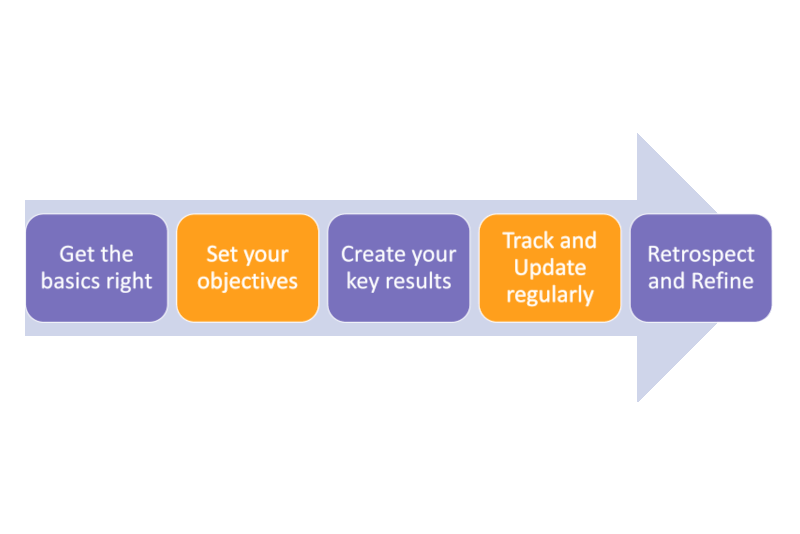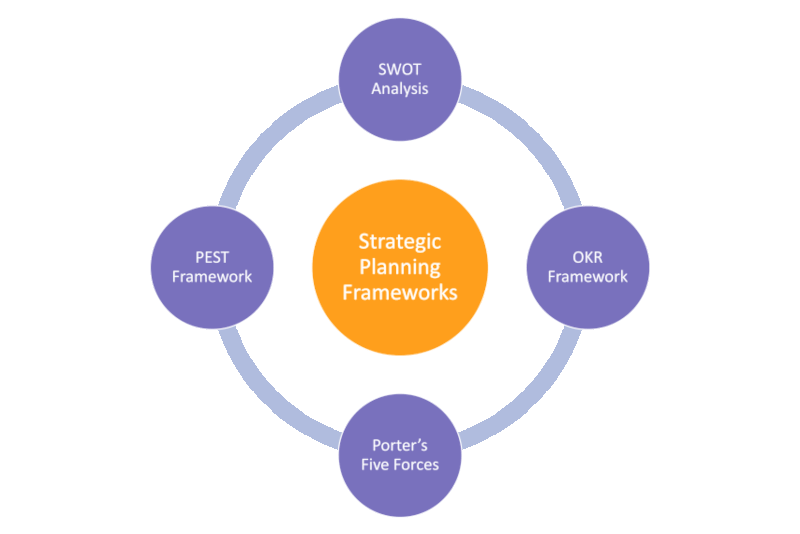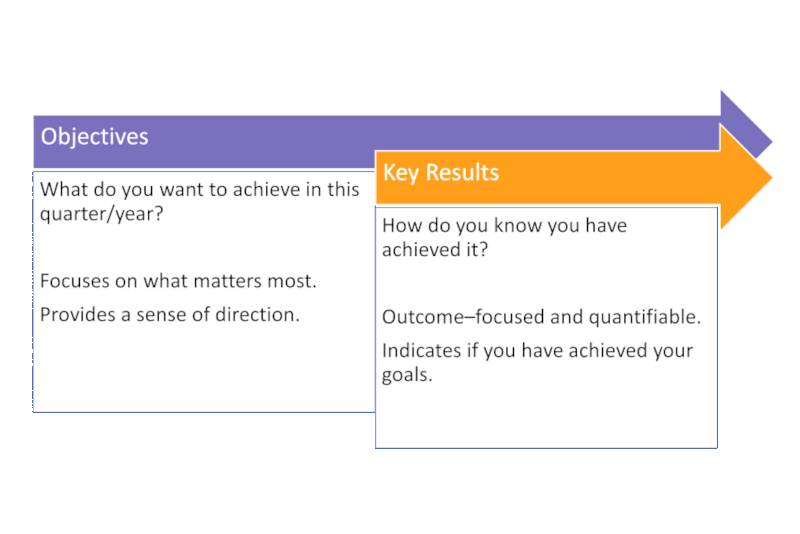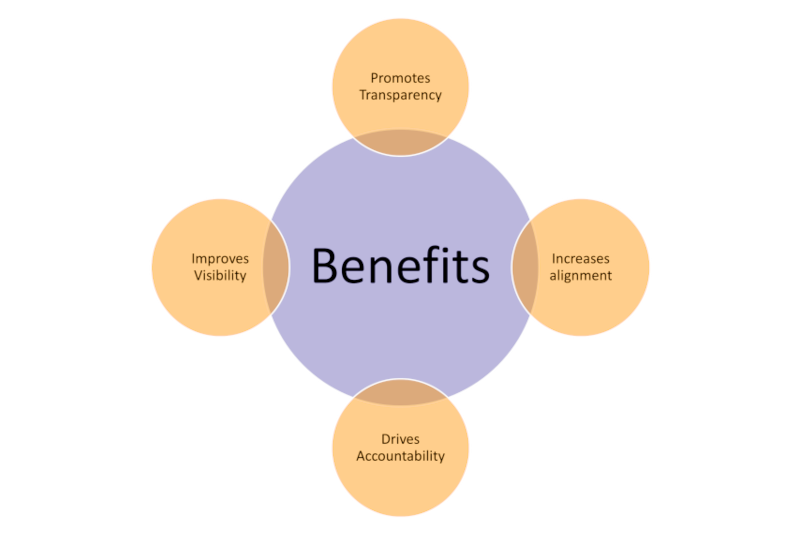The OKR Process
Recap
Here's a quick recap about what OKRs are:
OKRs stand for Objectives and Key Results.
OKRs are typically used to set quarterly goals though they can be customized for yearly, half-yearly or even monthly durations. Goals are ambitious in nature.
OKRs are usually set at the company and team levels. It is advised to have no more than 3 to 5 Objectives per team per quarter and no more than 3 to 5 related key results per objective.

Setting up OKRs
So here comes the big question. How do you go about setting OKRs?
Step 1: Get the basics right
If your company is not familiar with OKRs, start by teaching your team about the process and terminology. This will avoid confusion and your teammates will be able to make meaningful contribution to the discussion later.
Also this would be a good time to discuss the 3Cs - Cycle, Cadence, Creation
Again, the cadence depends on your team, but most experts recommend checking in weekly.
The Top Down model is where leaders set both objectives and key results.
The Bottom Up model is where individuals set both objectives and key results.
The Hybrid model is where leaders set the objectives and individuals set the key results.
Determine the best fit model according to your company size and structure. The OKR experts promote the hybrid model since it allows meaningful collaboration between the leaders and individuals.
Step 2: Set your objectives
Have a brainstorming session with your team leaders and decide what the core focus of the company is for the current cycle. Create your objectives accordingly.
Step 3: Create your key results
Using the objectives created earlier, come up with key results that can be measured and are indicative of whether you have reached the objective or not.
Step 4: Track and Update your goals regularly
Do not skip your check in sessions. These check in sessions are important and provide insights on whether you will reach your goals at the end of the cycle. Do them regularly to monitor your progress.
Step 5: Retrospect
Retrospection is as important as planning. This is the time where you gain insights to make sure the next OKR cycle goes well.
A few questions you can ask:
It is important to be patient, especially if this is your first time trying OKRs. It usually takes a couple quarters before you have a refined process for setting OKRs.


